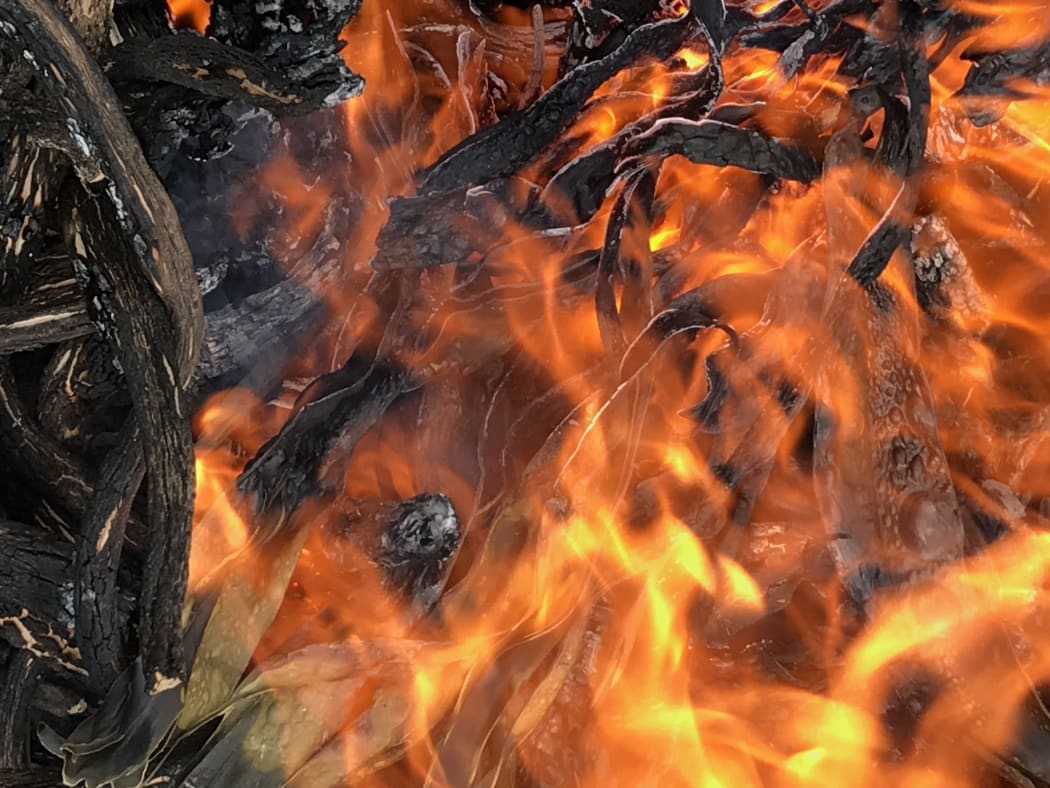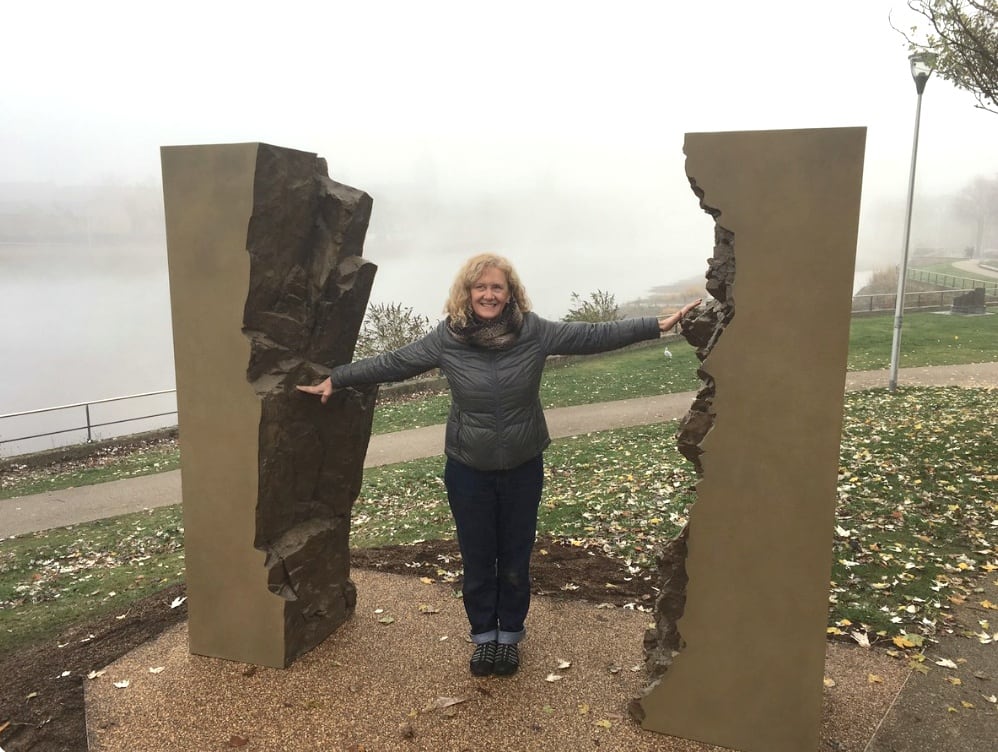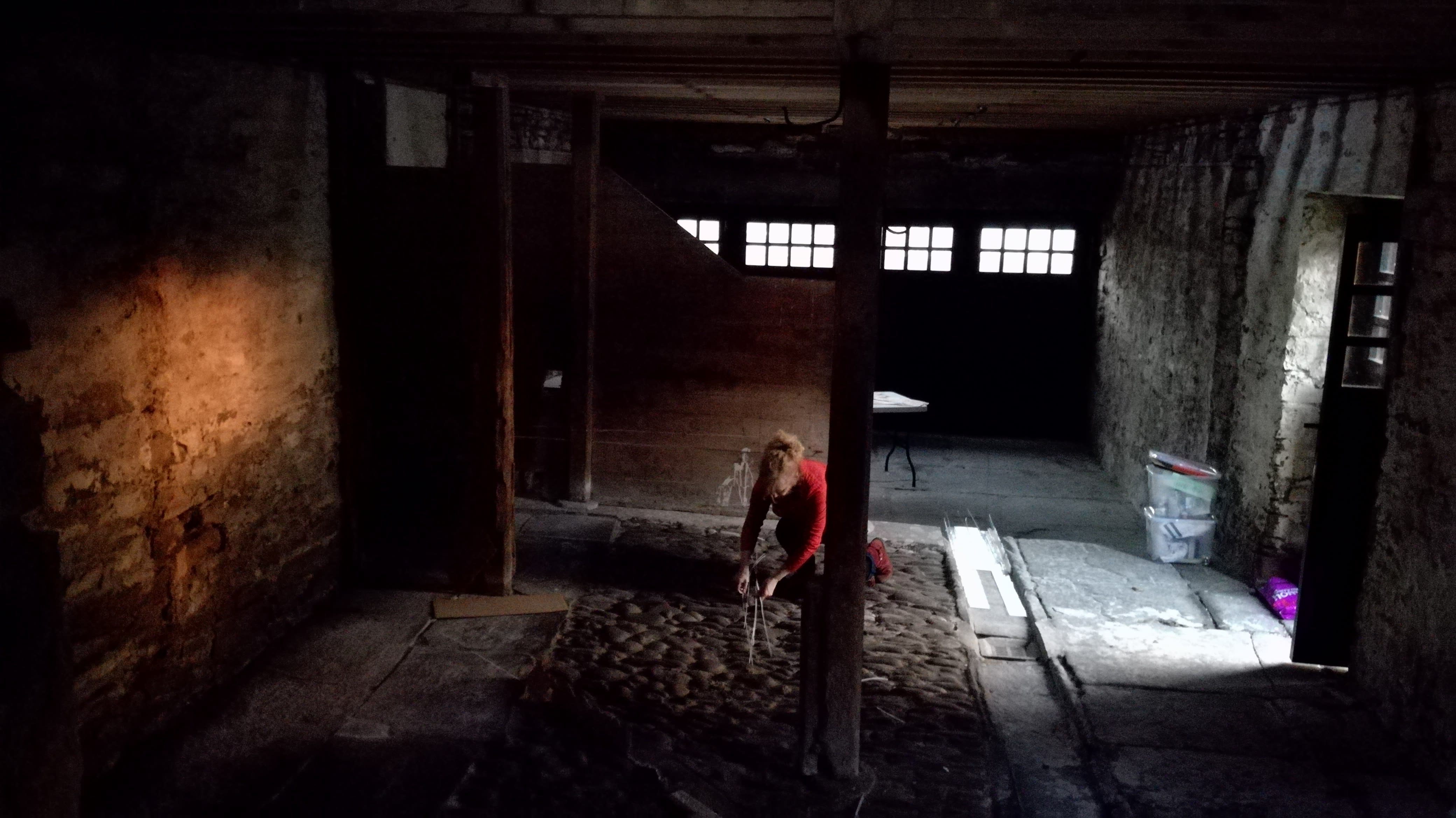
In August of 2019, a new exhibition will open in The Byre, a remote exhibition space situated in the northernmost county in Scotland. Titled Field Notes, the exhibition will feature site specific works by Annie Cattrell, Anne Vibeke Mou, Anne Petters, and Jeff Zimmer. Each of these artists, through site visits and a group residency, has developed a series of works responding to the unique landscape, culture, and architecture of Caithness. Artists Annie Cattrell and Anne Vibeke Mou, in particular, are exploring the relationships between human activity and the land through empirical, geologic, and anthropological research.

Artist Annie Cattrell with her installation "Seer" installed along the River Ness.
Born in Glasgow, Annie Cattrell studied at The Glasgow School of Art and the University of Ulster before finishing her studies in the Ceramics and Glass Programme at the Royal College of Art. Within her practice, Cattrell often combines visual art with scientific inquiry, seeking out the poetic space between what can be recorded and what can be felt.

Cattrell's drawing of intersecting topographies.
Although she is based in London, Cattrell has continued to work in Scotland and in northern Scotland in particular. In 2018, Cattrell unveiled Seer along the banks of Loch Ness. Consisting of two bronze-infused resin standing “stones,” Seer represents the Great Glen Fault that geologically separates the North and West Highlands. The stone texture was derived from the two sides of the fault, bringing them within arms reach. The title references the Brahan Seer who, in the 17th century, predicted the future using an adder stone. By reaching out and touching each stone, the geologic past, the human present, and the unknown future intersect.
 Cattrell inside The Byre. Photo: Jeff Zimmer
Cattrell inside The Byre. Photo: Jeff Zimmer
For Field Notes, Cattrell continues to investigate these intersections. By physically measuring The Byre, examining geolocation data, and researching the geologic history of Caithness, Cattrell situates humans within deep time, a concept proposed by Scottish geologist James Hutton to describe the massive timescale involved in the formation of the earth as it presently exists. The topography of The Byre floor, captured along the cardinal directions, emphasizes the unique qualities of the space – a kind of fingerprint of the stones – while also placing it within a wider context. Much like Seer, Cattrell's installation in The Byre allows one to bridge the vast expanse between time and space.

Anne Vibeke Mou gathering kelp from the North Sea.
Anne Vibeke Mou’s installation, An Unearthly Garden, was developed through her exploration of local industries and mythology. By burning kelp, heather, and hay to create ash, Mou is re-creating a process used in glass making centuries ago. Melted with base ingredients and the crushed fossils of tetrapodomorphs which record the adaptation of sea animals to the land, these materials are transformed into glass, connecting the land and the sea, deep time and the present, and ourselves with human history.

Kelp ash and fossil found in Caithness.
“My glass contains remnants of an evolutionary moment where life stepped out of the water and onto land,” says Mou. “[The project] speaks of how our story continues to intertwine with the forests of the sea and is even embedded in the history of glass making.” The result of this process will be an evolving display of crafted glass and found objects.

Forms created from glass that was made while working at The Byre. Photo: Anne Vibeke Mou
Since graduating from The Glasgow School of Art and the Royal College of Art, Anne Vibeke Mou has developed a studio practice focused on the consideration of material and the use of abandoned or obsolete processes. Through these processes, Mou seeks out the narrative and conceptual possibilities found in the materials and what is discovered through their transformation.
The 18th- and 19th-century romantic artists knew that a ruined building has the capacity to evoke contemplation of one's place in the world. The Byre, similarly, begs questions about its history, inspiring inquiry into the past of this specific place, leading to broader questions about human habitation and the formation of the landscape. We then reflect on where we fit into this story, in deep time, and ultimately the cosmos. Artists Annie Cattrell and Anne Vibeke Mou, through their individual practices, draw from scientific and cultural histories to present aesthetic replies to the immense questions posed by these small stone rooms.
Read more
Field Notes @ The Byre part 1: Looking Down at the Sea from the Bottom of a Lake
Field Notes @ The Byre part 3: The Calm